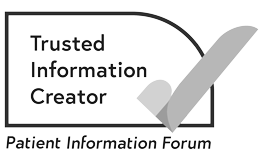Lymphoma symptoms
The most common symptom of lymphoma is a painless swelling or lump in the lymph nodes in the neck, armpit or groin.
Common symptoms of lymphoma
The most common symptom of lymphoma is a painless swelling or lump in the neck, armpit or groin. This is caused by lymphoma cells building up in the lymph nodes, which makes them bigger.
In this video, Jill, a Cancer Information Nurse, lists symptoms of lymphoma. Understanding these lymphoma symptoms can help with earlier recognition and treatment.
There are different causes of swollen lymph nodes. But if you notice a painless, swollen lymph node, it is important to get it checked by your GP.
Lymph nodes are part of the lymphatic system, which helps protect your body from infection and disease. When the lymph nodes are fighting infection, they often swell and become sore to touch.
If there is cancer in the lymph nodes, they may swell, but are usually painless.
Other symptoms of lymphoma
Some people have other symptoms, depending on where the lymphoma is in their body.
Signs and symptoms of lymphoma
If the lymphoma is in the chest area, symptoms may include:
- a cough
- difficulty swallowing
- shortness of breath.
If the lymphoma is in the stomach or bowel, symptoms may include:
- indigestion
- tummy pain
- weight loss.
Indigestion is also called heartburn or acid reflux. Symptoms include:
- a burning feeling in the chest
- burping
- feeling full and bloated.
Sometimes pressure from swollen lymph nodes may cause pain. For example, it can cause pain in an area such as the tummy (abdomen). This is not common.
A symptom of Hodgkin lymphoma, is aching or painful swollen lymph nodes soon after drinking alcohol. But this is rare.Lymphoma can also cause symptoms that affect the whole body, including:
- repeat infections
- heavy, drenching sweats, especially at night
- high temperatures or fevers over 38˚C (100.4˚F) that come and go without any obvious cause
- unexplained weight loss
- tiredness
- itching all over the body that does not go away.
The following types of lymphoma may cause other symptoms:
B symptoms
Lymphoma B symptoms include:
- heavy, drenching night sweats
- unexplained high temperatures
- unexplained weight loss.
Doctors use information about B symptoms to help stage lymphoma and plan treatment.
Related pages
If lymphoma is in the bone marrow
If the lymphoma is in the bone marrow it can reduce the number of blood cells in your body. Bone marrow is material in the middle of bones where blood cells are made.
Lymphoma in the bone marrow can cause:
- tiredness, if you do not have enough red blood cells (anaemia)
- difficulty fighting infections, if you do not have enough white blood cells
- bruising or bleeding, if you do not have enough blood-clotting cells (platelets).
Lymphoma in children and younger adults
Lymphoma is more common in people who are over 50. But it can happen at any age. We can help teenagers and young adults find more information and support. Lymphoma Action provides information about lymphoma in children.
About our information
This information has been written, revised and edited by Macmillan Cancer Support’s Cancer Information Development team. It has been reviewed by expert medical and health professionals and people living with cancer.
-
References
Below is a sample of the sources used in our lymphoma information. If you would like more information about the sources we use, please contact us at informationproductionteam@macmillan.org.uk
Follows GA, Barrington SF, et al. Guideline for the first-line management of Classical Hodgkin Lymphoma — A British Society for Haematology guideline. Br J Haematol, 2022; 197, 558– 572. [accessed April 2024].
Fox CP, Chaganti S, McIlroy G, et al. The management of newly diagnosed large B-cell lymphoma: A British Society for Haematology Guideline. Br J Haematol. 2024; 204(4):1178–92. [accessed April 2024].
McKay P, Fielding P, et al. Guidelines for the investigation and management of nodular lymphocyte predominant Hodgkin lymphoma. Br J Haematol, 2015; 172, 32-43. [accessed April 2024].
McNamara C, Montoto S, et al. The investigation and management of follicular lymphoma. Br J Haematol, 2020; 191, 363-381. [accessed April 2024].
National Institute for Health and Care Excellence. Non-Hodgkin’s lymphoma: diagnosis and management. NICE guideline [NG52]. Published: 20 July 2016. Last update Oct 2021. [accessed April 2024].
Date reviewed

Our cancer information meets the PIF TICK quality mark.
This means it is easy to use, up-to-date and based on the latest evidence. Learn more about how we produce our information.
The language we use
We want everyone affected by cancer to feel our information is written for them.
We want our information to be as clear as possible. To do this, we try to:
- use plain English
- explain medical words
- use short sentences
- use illustrations to explain text
- structure the information clearly
- make sure important points are clear.
We use gender-inclusive language and talk to our readers as ‘you’ so that everyone feels included. Where clinically necessary we use the terms ‘men’ and ‘women’ or ‘male’ and ‘female’. For example, we do so when talking about parts of the body or mentioning statistics or research about who is affected.
You can read more about how we produce our information here.





